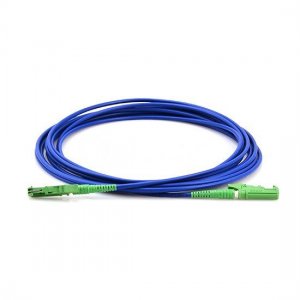Fiber Patch Cable: Essential Connectivity Solution for High-Speed Networks

# Fiber Patch Cable: Essential Connectivity Solution for High-Speed Networks
## Introduction to Fiber Patch Cables
Fiber patch cables, also known as fiber optic patch cords, are essential components in modern networking infrastructure. These cables serve as the backbone for high-speed data transmission across various industries, from telecommunications to data centers and enterprise networks. Unlike traditional copper cables, fiber patch cables use light to transmit data, offering superior performance and reliability.
## Key Features of Fiber Patch Cables
### High Bandwidth Capacity
Fiber patch cables provide significantly higher bandwidth compared to copper alternatives. This makes them ideal for applications requiring massive data transfer, such as:
– Cloud computing environments
– Video streaming services
– High-frequency trading platforms
– 5G network infrastructure
### Low Signal Loss
One of the most significant advantages of fiber patch cables is their minimal signal attenuation. Optical fibers can maintain signal integrity over much longer distances than copper cables without requiring signal boosters.
### Immunity to Electromagnetic Interference
Unlike copper cables, fiber optics are not affected by electromagnetic interference (EMI) or radio frequency interference (RFI). This makes them particularly valuable in industrial environments with heavy electrical equipment.
## Types of Fiber Patch Cables
### Single-Mode vs. Multi-Mode
Fiber patch cables come in two primary varieties:
– Single-mode fiber (SMF): Designed for long-distance transmission with a smaller core diameter
– Multi-mode fiber (MMF): Optimized for shorter distances with a larger core that allows multiple light modes
### Connector Types
Various connector types are available to suit different applications:
– LC: Small form-factor connector popular in high-density environments
– SC: Snap-in connector widely used in telecom and datacom applications
– ST: Bayonet-style connector common in older installations
– MTP/MPO: Multi-fiber connectors for high-density applications
## Applications of Fiber Patch Cables
### Data Centers
Modern data centers rely heavily on fiber patch cables for:
– Server-to-switch connections
– Storage area networks (SANs)
– Inter-rack connectivity
– High-performance computing clusters
### Telecommunications
Telecom providers use fiber patch cables for:
– Last-mile connectivity
– Central office interconnections
– Mobile backhaul networks
Keyword: Fiber Patch Cable
– Fiber-to-the-home (FTTH) deployments
### Enterprise Networks
Businesses implement fiber patch cables for:
– Campus backbone networks
– High-speed inter-departmental connections
– Video conferencing systems
– Secure data transmission
## Best Practices for Fiber Patch Cable Installation
To ensure optimal performance and longevity:
– Always handle cables gently to avoid damaging the fragile fibers
– Keep bend radius within manufacturer specifications
– Use proper cable management to prevent strain on connectors
– Regularly inspect and clean connectors to maintain signal quality
– Label cables clearly for easy identification and troubleshooting
## Future of Fiber Patch Cables
As network demands continue to grow exponentially, fiber patch cables will play an increasingly critical role in supporting:
– Emerging 400G and 800G Ethernet standards
– Next-generation data center architectures
– Advanced 5G and 6G wireless networks
– Quantum communication systems
The ongoing development of bend-insensitive fibers and higher-density connectors will further enhance the capabilities and applications of fiber patch cables in the coming years.